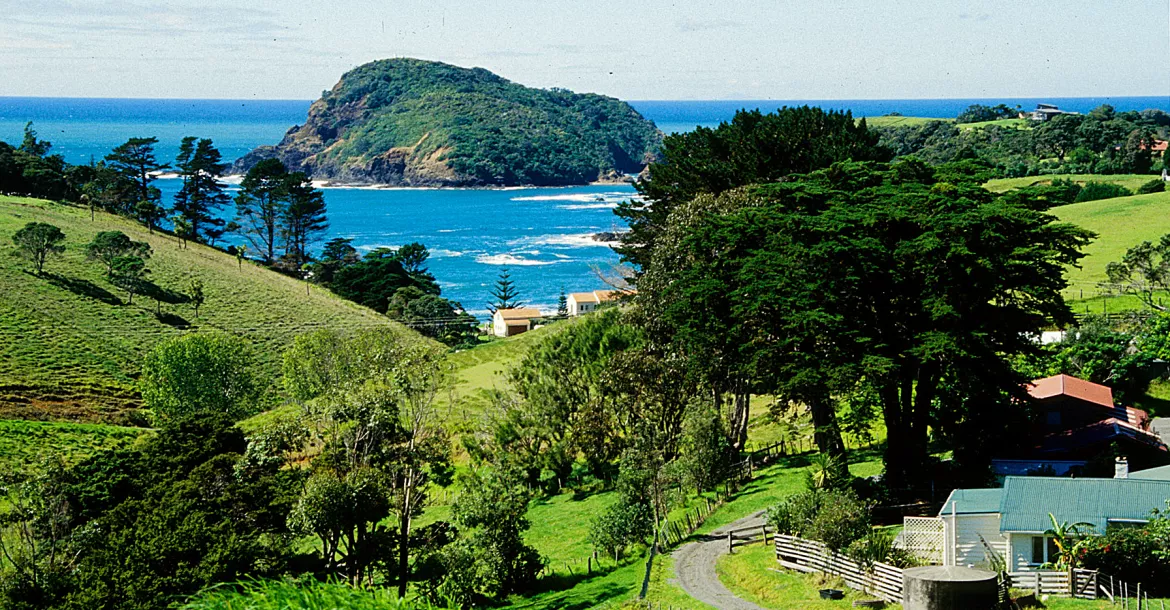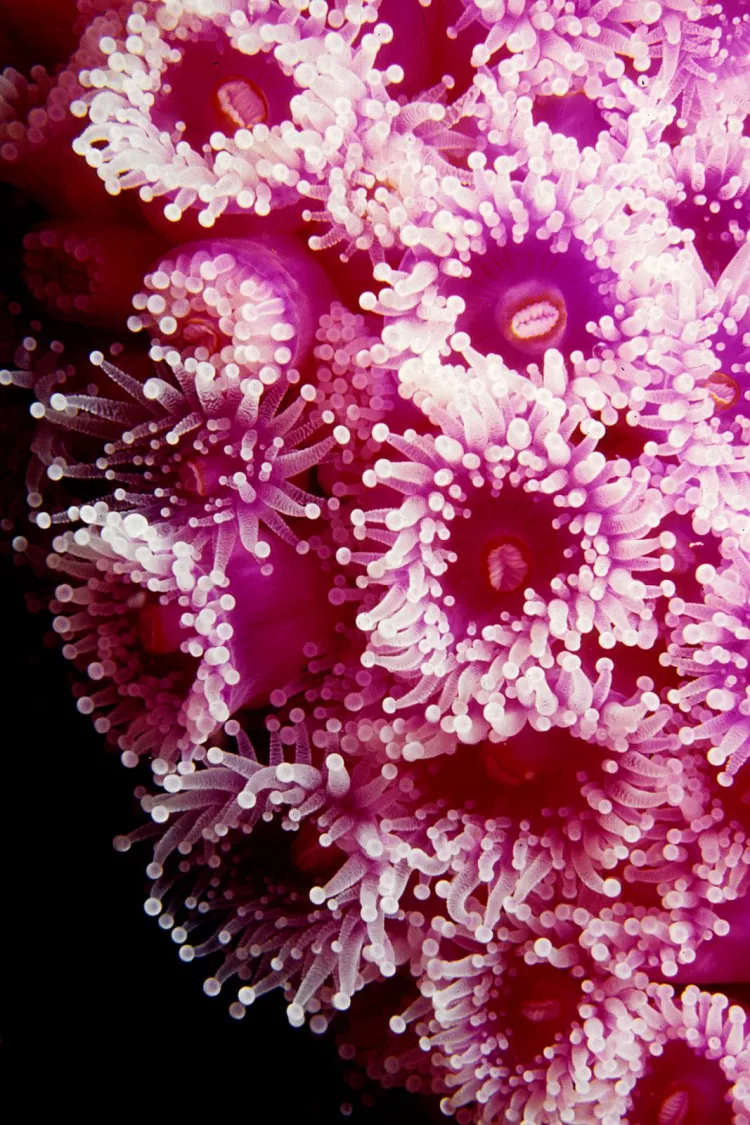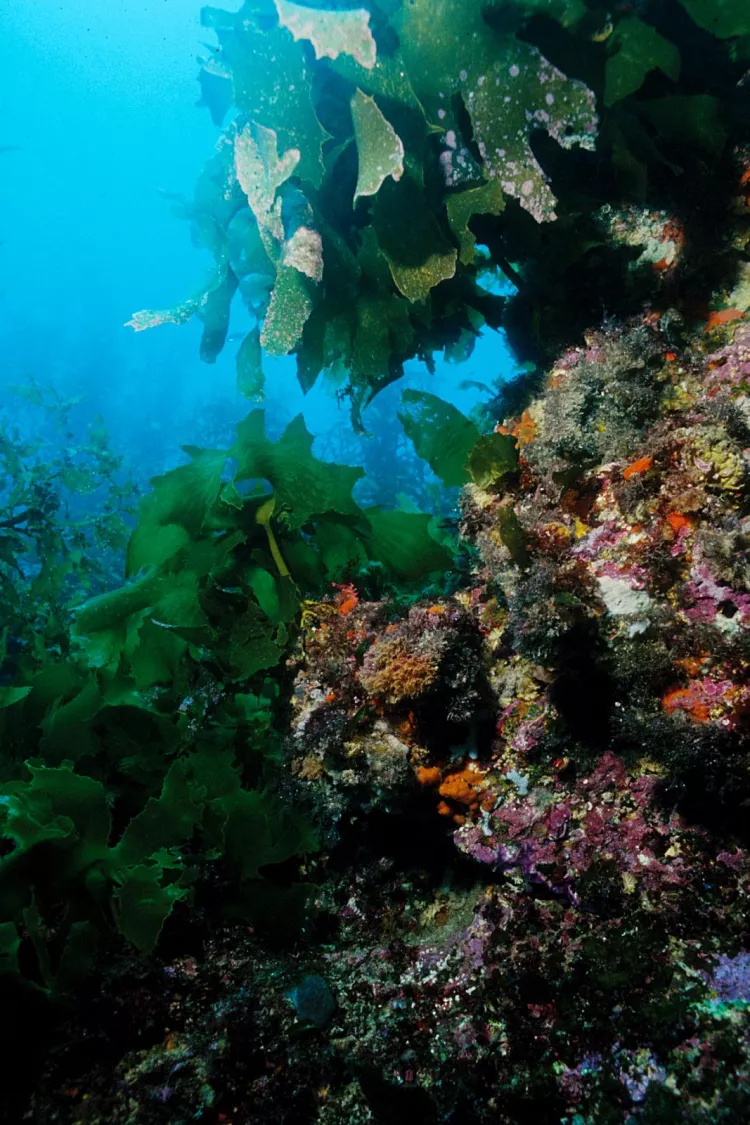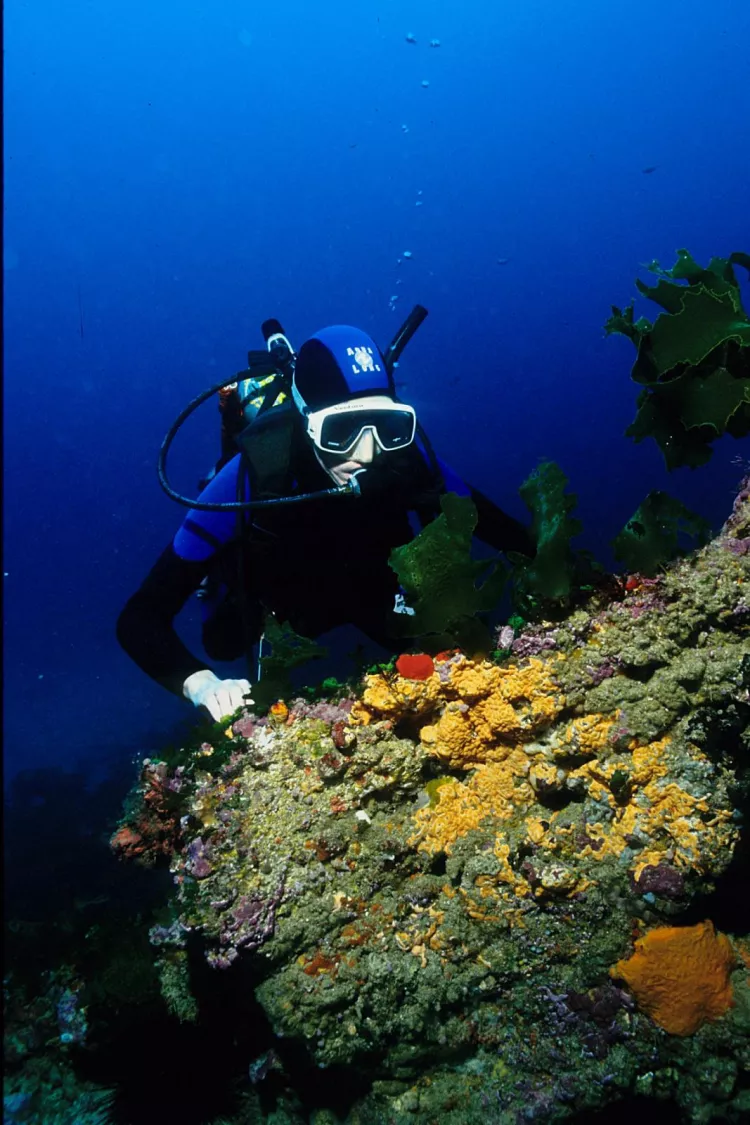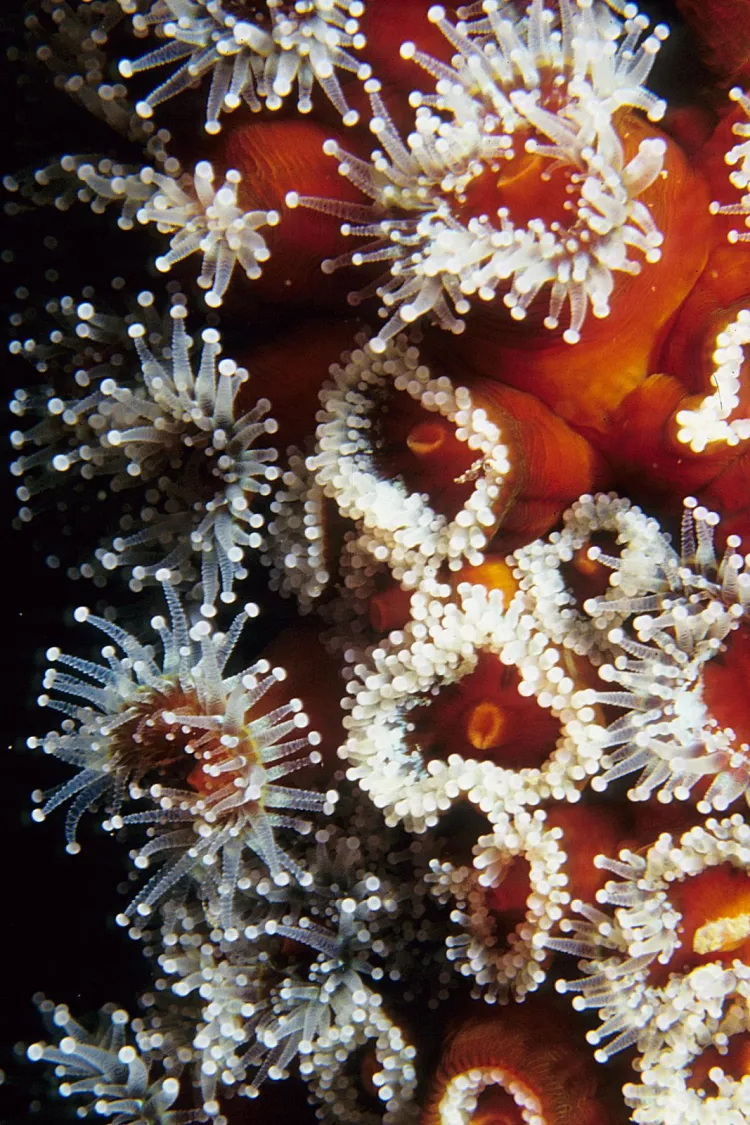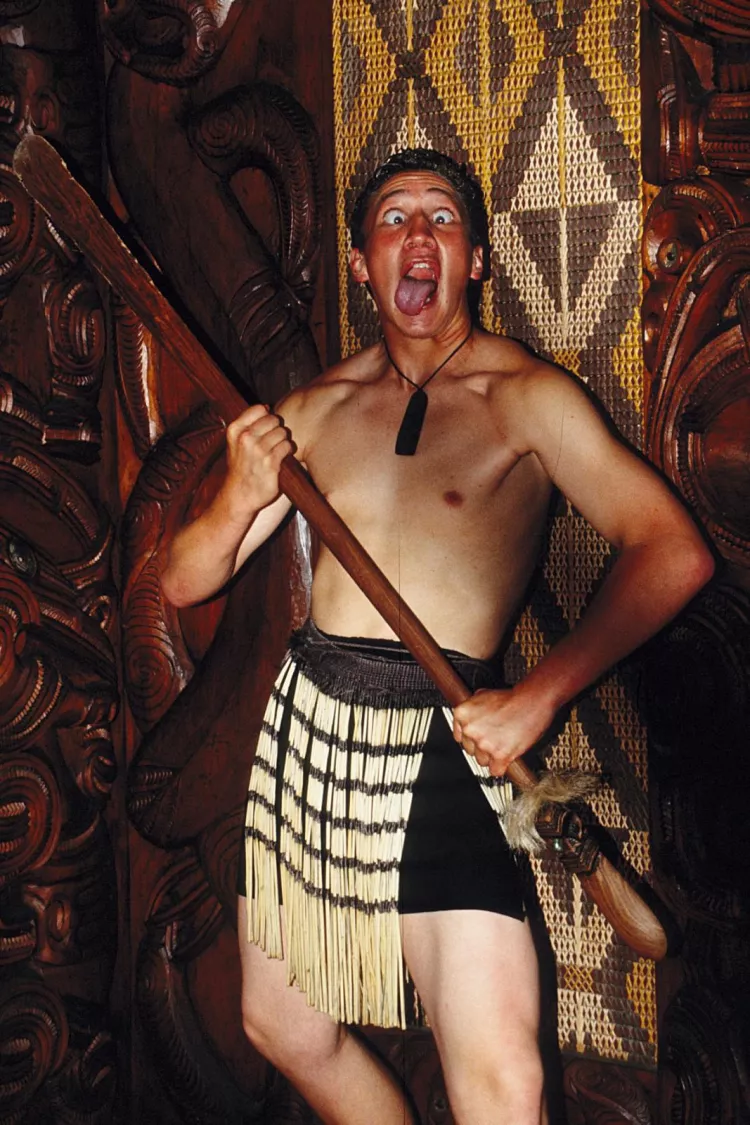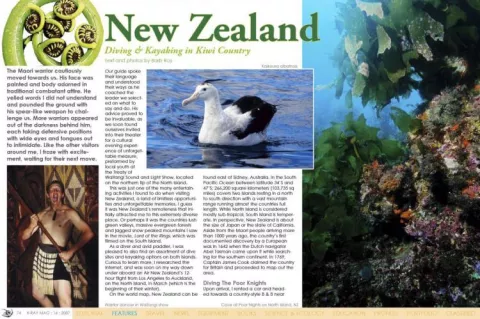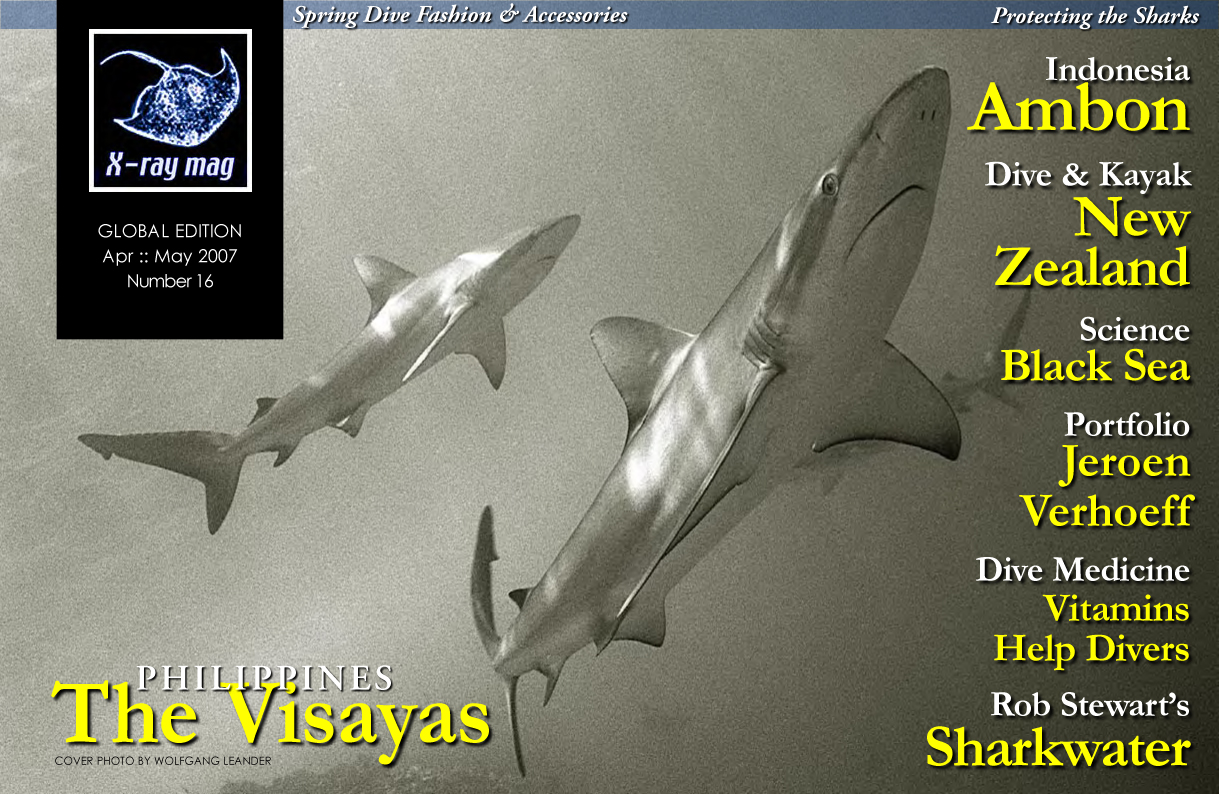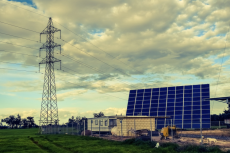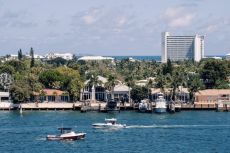The Maori warrior cautiously moved towards us. His face was painted and body adorned in traditional combatant attire. He yelled words I did not understand and pounded the ground with his spear-like weapon to challenge us. More warriors appeared out of the darkness behind him, each taking defensive positions with wide eyes and tongues out to intimidate. Like the other visitors around me, I froze with excitement, waiting for their next move.
Contributed by
Our guide spoke their language and understood their ways as he coached the leader we selected on what to say and do. His advice proved to be invaluable, as we soon found ourselves invited into their theater for a cultural evening experience of unforgettable measure, preformed by local youth at the Treaty of Waitangi Sound and Light Show, located on the northern tip of the North Island.
This was just one of the many entertaining activities I found to do when visiting New Zealand, a land of limitless opportunities and unforgettable memories. I guess it was New Zealand’s remoteness that initially attracted me to this extremely diverse place. Or perhaps it was the countries lush green valleys, massive evergreen forests and jagged snow peaked mountains I saw in the movie, Lord of the Rings, which was filmed on the South Island.
As a diver and avid paddler, I was pleased to also find an assortment of dive sites and kayaking options on both islands. Curious to learn more, I researched the Internet, and was soon on my way down under aboard an Air New Zealand’s 12-hour flight from Los Angeles to Auckland, on the North Island, in March (which is the beginning of their winter).
On the world map, New Zealand can be found east of Sidney, Australia, in the South Pacific Ocean between latitude 34’S and 47’S; 266,200 square kilometers (103,735 sq miles) covers two islands resting in a north to south direction with a vast mountain range running almost the countries full length. While North Island is considered mostly sub-tropical, South Island is temperate. In perspective, New Zealand is about the size of Japan or the state of California. Aside from the Maori people arriving more than 1000 years ago, the country’s first documented discovery by a European was in 1642 when the Dutch navigator Abel Tasman came upon it while searching for the southern continent. In 1769, Captain James Cook claimed the country for Britain and proceeded to map out the area.
Diving The Poor Knights
Upon arrival, I rented a car and headed towards a country-style B & B near Wangarei for some diving around The Poor Knights. The constant hum of Cicadas filled the air as I navigated the narrow winding country roads, past pastures with lamas and cattle. New Zealanders consider this southeastern part of the North Island sub-tropic, meaning many of the tropical plant and fish species flourish, without the usual muggy humid climates normally associated with islands closer to the equator. I was just glad I could wear my shorts, T-shirt and sandals.
After repacking my dive and underwater camera gear the following morning, I headed for the Tutukaka Marina for my first day at the Poor Knights, with Dive Tutukaka. The shop was teaming with excited divers picking up rental gear, buying souvenirs and getting air fills. Totally unexpected, I met up with two fellow Canadian residents, originally from New Zealand, Ian and Julia Hass, who arranged to joined me.
The shop had plenty of room for everyone on their seven dive charter boats, with tasty sack lunches from a nearby restaurant (offered as an option). During the 45-minute ride out, the boat captain told us we could expect a water temperature of 21°C (70-72°F), with a visibility of 17-24 meters (60-80 feet). He also added that the water temps drop to 15°C (59°F) during the winter months. I was the only diver in a dry suit; everyone else wore a full 5-6mm wet suit.
Two large islands and several smaller pinnacles, islets and rock stacks make up the Poor Knights, volcanic in origin, which are located about 15 miles (24 kilometers) off the northeastern coast. In 1981, this area was established as a Marine Reserve. Today, hundreds of divers from around the world enjoy the areas rich abundance of marine life found in the clear waters of this unique archipelago. The unusual name Poor Knights was actually given by Captain Cook when he sailed past the islands. Thinking they resembled a popular breakfast dish in Europe, ‘Poor Knights Pudding’ (known today as French Toast), and the fact the red flowering lilies in October look a bit like strawberry topping, it’s easy to understand why.
Upon arrival, we tied up next to a sheer rock wall in front of the massive Rico Rico Cave, so big a whole marina would fit inside if they ever decide to build one! Leaving my hood and gloves behind, I donned my DUI shell dry suit with a 300 gram polartec undergarment and joined the others entering the water. Ian and Julia followed me in, and we descended next to fronds of kelp, swaying gently in a mild surge.
Next to the cave entrance, we followed a wall stretching from the surface to over 27 meters (90 feet). A rich blend of invertebrate life covered everything. Stingrays, over two feet across, kept swimming past, almost close enough to touch. Ian and Julia were happy to play models for me, without really knowing they were. Huge boulders below the cave entrance resemble a canvas of art with a colorful collage of marine critters painted upon it. Scorpion fish and other camouflaged sculpins also hid in cracks and crevasses around the rocky pinnacle. A few white squid eggs were clustered together on the bottom and more colorful fish than I could keep track of.
Our second dive was at a site called ‘Magic Wall’ and the third dive at a location beneath an archway called ‘Middle Arch.’ Within 20 minutes at Magic Wall, I lost count of how many different species of moray eels we saw. One was actually next to a scorpion fish and stayed there for the longest time as if they were friends. Sponge, tunicates, crabs, nudibranchs and pink gorgonian fans flourished on a kelp-covered reef, between 12-18 meters (40-60 feet) at Middle Arch. Sandy patches separated the rocky terrain, where I found tiny slender fish, starfish and more stingrays. Like everything else, the wall beneath the archway was covered with macro life, creating awesome wide-angle, close-up or macro image opportunities.
In all, I did four dives over two days at the Poor Knights, with each dive quite different in appearance, yet still didn’t see it all. Talking with the crew and other divers, there are over ten choice dive sites in the area to choose from. On one of our excursions, our boat joined several other boats from the mainland for a jazz jam in the big cave. The acoustics were incredible from the live music being played by the bands!
Overall, the diving was easy, service exceptional and price reasonable. While diving is available year round, the seas are the calmest during the summer months (our winter) and the visibility best during their autumn and early winter months (March-July). If wreck diving is your pleasure, there are two retired Navy ships scuttled for divers, north of the Tutukaka Heads. The HMNZS Tui is a 62-meter (203 foot) long US Navy ship was put down in 1999 in 30 meters (98 feet) of water. The 113-meter (370 foot) long HMNZS Waikato went down in the year 2000, in 28 meters (92 feet) of water.
Kayaking Poor Knights
Before I left the area, I arranged a day of paddling along the shoreline with Kea Spill and Shane Orchard, from Paradise Coast Kayaking (now called Pacific Coast Kayaks). We launched our boats just south of the marina, in a secluded bay. The day was fairly sunny and the water calm, just how I like it. A dry bag kept my camera safe and a spray skirt kept the bottom half of me dry, as it pulled over the lip of the boat. Kea also packed a lunch, water, sun block and snorkeling gear before we headed north.
Our journey led us through tight passageways and across water that resembled washing machine agitation. Kea and I were in a two-person kayak and Shane joined us later with his single person kayak. At times, I was sure our boat was attracted to white water. Having Kea as a chauffeur (steering from the back) was great, especially when I needed to photograph something or steady my camera. We landed at Kukutauwhao Island for a lunch and hiked through thick brush to the top of a steep hill.
Once again, the cicadas song was in the air, and I actually found one of the little critters squeaking away. Looking around at the breathtaking view, I was amazed at the grandeur of such a stunning place. Once back in our boat, we continued north past weather beaten cliffs, sparse patches of trees and secluded beaches. After Shane joined us, we headed for Whale Bay for a snorkel dive. Shane said many of his clients enjoy coastal snorkeling during the summer months, and some even camp along the way during multi-day journeys.
Diving Paihia
Paihia was my next destination, located at the top of the North Island, for some diving at The Bay of Islands. The town was hopping with activities like wind surfing, whale watching boats, kayaks, diving and more outdoor enthusiasts. I located Paihia Dive for a day of diving on the Rainbow Warrior, an old Greenpeace boat with a very colorful history.
Apparently, the French Secret Service placed charges on the vessel in July 1985, because of protests conducted by Greenpeace over nuclear testing in the Pacific by the French government. The detonation sent the Rainbow Warrior to the bottom of the Auckland Harbour. In 1987, the ship was re-floated and relocated to the Cavalli Islands where it rests today in Matauri Bay.
I was in photographic heaven to find so many different shades of jeweled anemones clinging to the rails and hull as I perused the Rainbow Warrior underwater. The wreck was sitting upright with the stern at 22 meters (70 feet), but didn’t look safe to penetrate. A thick growth of kelp covered the deck while the most color and life was found on the starboard side. Clusters of sponge clung to the rail and tiny sculpins danced about the deck. I reached a maximum depth of 26 meters (85 feet) where sand surrounded the hull.
We explored Lion Point next, within the Bay of Islands group. Upon descent I could see the fingering reefs suggested a volcanic past in its design. Sea urchins, lobster, crabs and shrimp used a ground cover of kelp to veil their presence. Steep walls supported a healthy invertebrate environment and the fish population seemed to be bountiful. At one point, our divemaster managed to grab a lobster, so we could see it up close!
Later that night, I was treated to an evening of Maori history during a performance sponsored by Culture North, Treaty of Waitangi Sound and Light Show (as explained in the opening paragraph). The areas youth told a 1000-year-old story about Kupe the first Maori chief to discover New Zealand, splendidly perform this live drama involving audience participation. Even the theater was adorned in traditional Maori carvings. Before leaving North Island, I made my way to the Mangingina Kauri walk in the Puketi Forest to see the giant trees, which once covered these northern lands. An easy accessible eco-friendly boardwalk has been placed there to lead the way through most of forest, creating a wonderful short or long walk.
Kayaking Queen Charlotte Sound
From Auckland, I caught a flight to Blenheim, at the northern tip of the South Island and picked up another rental car. Within a few hours, I was kayaking in the Queen Charlotte Sound with Marlborough Sound Adventure Company out of Picton. The setting sun gave the Tea trees lining the banks a golden hue. Paddling clear of a huge passenger/auto ferry, connecting the two islands, we headed for a blue penguin nesting area. Unfortunately, the tiny birds were still out fishing. We made it back to town as the sun was setting. My new paddling friends joined me for a plate of green-lipped mussels and some tasty local wine, two items the area is famous for.
Diving a Russian cruise liner
Kevin Bailey from Blenheim Dive Centre picked me up at my B & B the next day for a dive on the 176 meter (578 foot) Russian cruise liner, Mikhail Lermontov, in Marlborough Sound. Kevin explained the $45-million ship unsuccessfully tried to pass at night between the shallow turbid waters of Cape Jackson and the Cape Lighthouse in 1986. Barely making it to Port Gore, the ship sank with the port bridge wing just 12 meters (39 feet) below the surface, on its side. Only one crew member was lost of the 408 passengers. Not bad, considering it went down in about ten minutes!
Kevin and I entered the murky water (October has the best visibility) and descended to the wreck. I made sure to don my hood and gloves this time, since the water on South Island was 10 degrees colder! No way would we be able to see everything, so we cruised along the top and outer edge of the deck. Fish of every size and color flourished in small to large groups. Sea cucumbers, sponge, bryozoans, orange and white anemones and hydroids were among the Lermontov’s residents. I was able to get some good shots of the ghostly looking bridge and mast, also covered in life. Ken went in and out several openings. Our maximum depth was 35 meters (114 feet) with the bow at 25 meters (85 feet) and the upper deck at 18 meters (58 feet).
The second dive was on a pinnacle rising out of the water next to Long Island Marine Preserve. The underwater terrain was filled with nudibranchs, fish, lobster and large sea stars. An inquisitive black sea lion buzzed us several times while we checked out numerous small valleys between the reefs. Sea stars with long rays, urchins, sea cucumbers fish and wary crabs were also observed. After the diving we stopped at Motuara Island Reserve for an afternoon hike to see the scenic views of the Sound. I thought it to be more of a birders’ paradise, counting over six different species and dozens of penguin houses positioned on both sides of the path up the hill. Once at the top, the view was breathtaking.
Kaikoura
Kaikoura, on the eastern side of South Island, was my final New Zealand destination. This bustling seaside town is located on a peninsula flanked by mountains on one side and a breathtaking coastline on the other. Kaikoura business operators cater to visiting tourist by offering a wide range of marine mammal activities. Before my scheduled day of diving, I signed up for several of these excursions.
The Whale watching trip offered by Whale Watching Kaikoura took the group to a favorite place frequented by sperm whales for hunting. Throughout the four hour tour, we learned all about these illusive giant-toothed creatures and observed them in the wild as they rested at the surface, while doing their deep 120-360 meter (400-1200 foot) feeding dives. We were also told that most of the whales in the area are males, who seem to tolerate the cooler water for better hunting grounds. Females are known to prefer warmer climates like Fiji and Hawaii. On my next tour, I was able to snorkel with dusky dolphins. It took several in and out of the water tries, but our persistence soon rewarded us with a large pod of 30 animals. They were all around us at one point then minutes later were gone! All snorkeling equipment and suits were provided by the operator, Dolphin Encounter Kaikoura.
On another excursion, Albatross Encounter took me out to open ocean where we found some local fisherman feeding gulls scraps of leftover bait. These were no ordinary gulls though they were one of the five varieties of the ocean-going great albatross who frequent the Kaikoura area. Normal gulls were clearly dwarfed by these beautiful gargantuans. Their wings were so long they had to double fold them on their back for management. Up to eight varieties of the smaller albatross can also be found along with petrels, shearwater, prions and shags.
I next came across a group of kids during a school field trip, who were snorkeling with resident seals. What a treat to be able to learn about your marine neighbors as the classroom is brought to the ocean! It was also fun to watch young kids get their first cold water experience and encounter groups of young playful pups at the same time. I couldn’t tell who was having more fun!
Dive Kaikoura who took me out for a dive in the kelp in a cove not far from the harbor. During the ride out (all of about ten minutes) the dive master explained they use about ten regular sites in the area, all within an hours ride. Most of their customers are divers who want to do one to three dives in a day and if they fly in, all of the equipment is provided, including wetsuits.
Upon entering the water in a sheltered cove, a gentle surge pulled at me, but disappeared around eight meters (25 feet). Wide-eyed fur seals curiously watched from the distance and submerged when I did. The boulders below were draped with lavender and purple algae and speckled most of the base structures under the kelp. Glimpses of colorful invertebrate life appeared as the surge revealed its treasure of life. Several fur seals zoomed by to check out my buddy and I.
Before long we were both enthralled with the wreckage of an old sailboat. Realizing the seals had lost their hide-and-go-seek partners, they both began to follow us, becoming our shadows. The four of us stayed together for most of the dive and even ventured over to the deeper parts of the cove where the current became more noticeable. The bottom quickly dropped to 18 meters (50 feet) and continued down. My buddy, the seals and I just peered down the bank into the dark abyss and decided this wasn’t the day to push our luck. Perhaps another day with double tanks and trimix…
Afterthoughts
Soon it was time for me to depart this wonderland in the Southern Hemisphere. I found New Zealand to be a place requiring several two to four-week visits to gather enough experiences of what this land was all about. I still want to paddle some coastal lands, see volcanoes, traverse a few mountains, go rock climbing, try sand surfing on the dunes and explore the southern part of South Island. Rafting through ice caves, exploring fresh water crystal springs and visiting Milford Sound are also on my list for a return holiday one day…
Barb Roy is a dive writer and underwater photographer based in Canada. Visit: www.barbroyphotography.com ■
Published in
-
X-Ray Mag #16
- Läs mer om X-Ray Mag #16
- Log in to post comments

